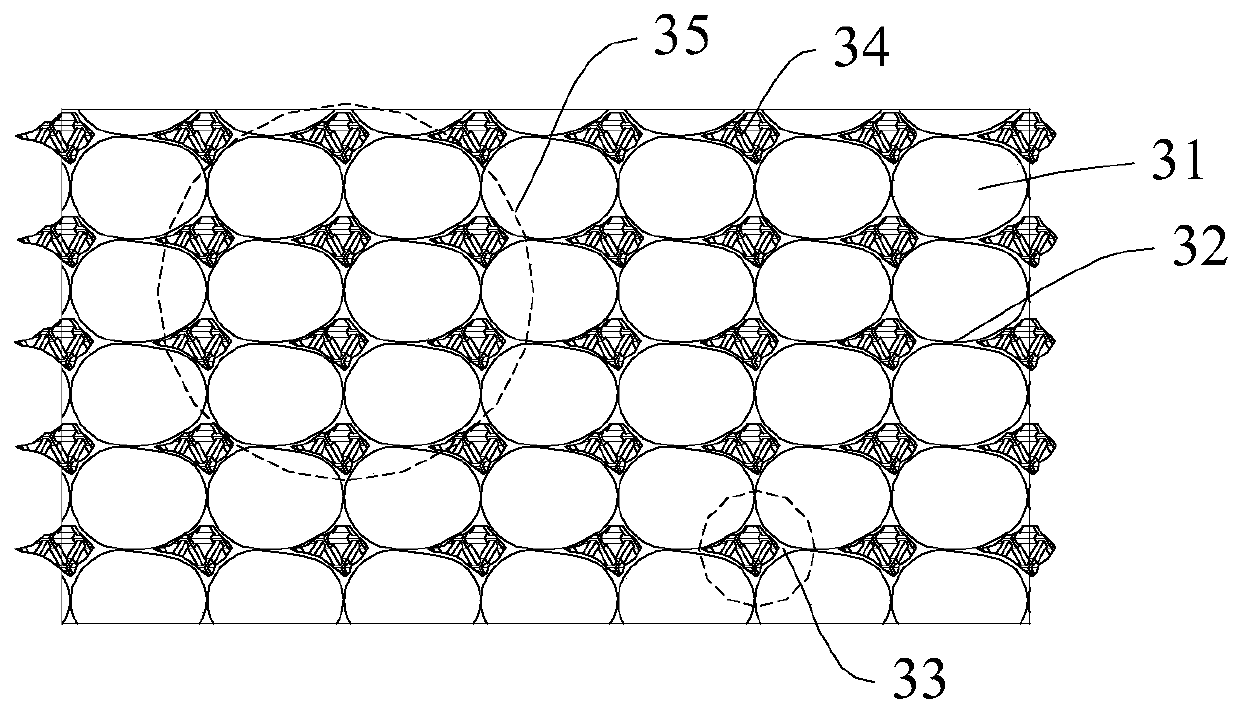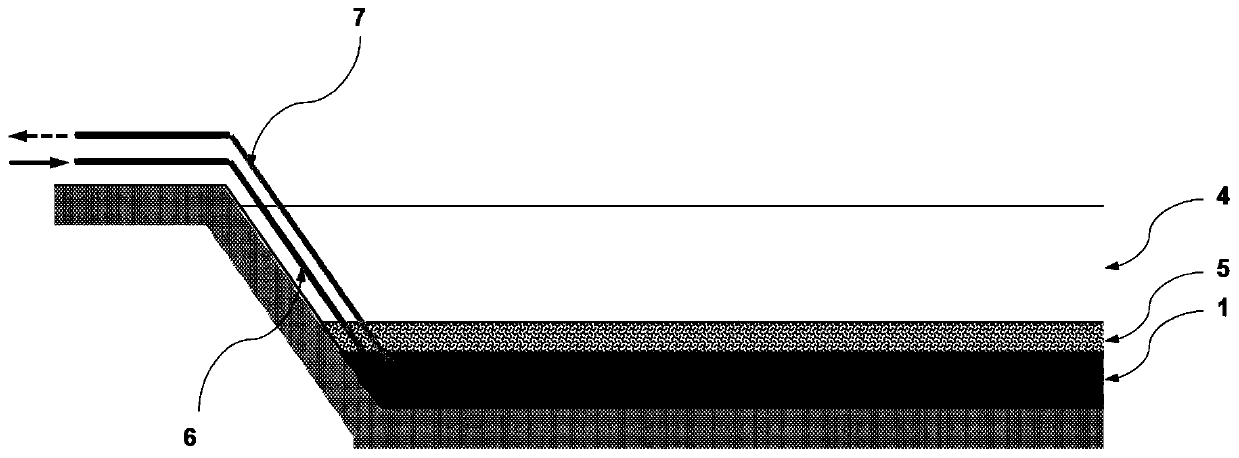Method and covering material for in-situ treatment of polluted bottom mud
A technology of polluted sediment and in-situ treatment, applied in sludge treatment, water/sludge/sewage treatment, chemical instruments and methods, etc. The effect of slow function decay, long service life and wide applicability
- Summary
- Abstract
- Description
- Claims
- Application Information
AI Technical Summary
Problems solved by technology
Method used
Image
Examples
Embodiment 1
[0064] In this embodiment, a retractable chain conveyor installed on a barge is used to spread the bedding material.
[0065] First, use brightly colored buoys to locate in the spreading waters. The division of each target area is closely related to the capacity of the conveyor hopper and the spreading rate. Before implementation, the speed and arm height of the belt conveyor must be determined.
[0066] Use the grab bucket on the crane to transfer the material from the nearby shore to the barge, and then use the trencher to transfer the material stacked on the barge into the conveyor hopper. The hopper feeds material to the conveyor belt, whose speed and arm height can be remotely controlled. Through field tests, 7-10 tons of materials, including sand (sand) or granular materials, can be evenly spread in the designated area within 15 minutes. The material conveyor can be installed on the water or on the shore. If the conveyor is installed on the shore, the transfer of the ma...
Embodiment 2
[0068] In this embodiment, a helicopter equipped with a spreading bag is used for spreading.
[0069] First, use brightly colored buoys to locate in the spreading waters. The division of each target area is closely related to the size of the spreading belt, the flying speed of the helicopter, and the spreading height. These related parameters must be determined before implementation.
[0070] Ground personnel communicated with the helicopter crew by radio to accurately locate the area and frequency of spraying.
[0071] Use a forklift to fix the spreading bag to the load-bearing rope lowered by the helicopter. After fixing, the helicopter hangs the spreading bag and then goes to the designated area.
[0072] Helicopter spreading adopts segmented deployment method, the area is divided in advance, and landing points are set for each segment. The function of the landing point is to recycle empty bags and load new bags to the helicopter.
Embodiment 3
[0074] In this example, a crane mounted with a clamshell dredger was used for spreading.
[0075] Firstly, use brightly colored buoys to locate in the spreading waters. The division of each target area is closely related to the size of the clamshell dredger and the height of the crane arm. These parameters must be determined before implementation.
[0076] Clamshell-shaped dredgers are used to grab materials, and the dredgers are hoisted above the water area to be sprinkled by a crane, and the dredgers are slowly opened, and then evenly sprinkled into the water body.
PUM
| Property | Measurement | Unit |
|---|---|---|
| particle diameter | aaaaa | aaaaa |
| thickness | aaaaa | aaaaa |
Abstract
Description
Claims
Application Information
 Login to View More
Login to View More - R&D
- Intellectual Property
- Life Sciences
- Materials
- Tech Scout
- Unparalleled Data Quality
- Higher Quality Content
- 60% Fewer Hallucinations
Browse by: Latest US Patents, China's latest patents, Technical Efficacy Thesaurus, Application Domain, Technology Topic, Popular Technical Reports.
© 2025 PatSnap. All rights reserved.Legal|Privacy policy|Modern Slavery Act Transparency Statement|Sitemap|About US| Contact US: help@patsnap.com



